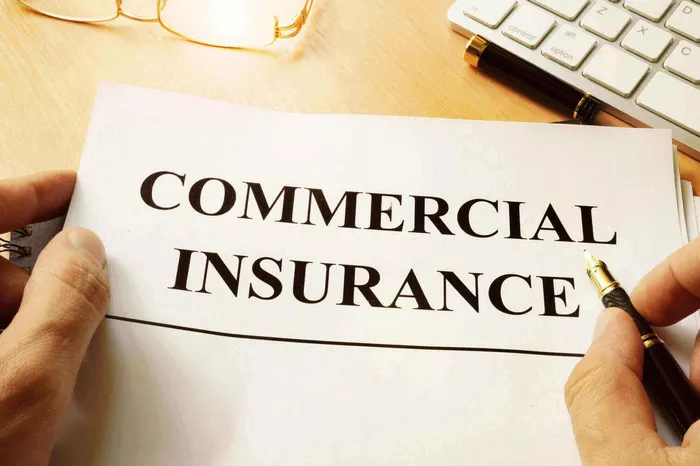Floods are one of the most common and costly natural disasters in New Jersey. Whether it’s due to hurricanes, tropical storms, or heavy rainfall, flood damage can leave families with huge repair bills. That’s why many homeowners and renters in New Jersey look into flood insurance. But a common question remains: what does flood insurance cover in nj?
This article will walk you through everything you need to know. We’ll break it down in simple terms—no complicated insurance language—so you know what to expect from a flood policy. We’ll talk about what is covered, what’s not, and why it’s important to understand the details, especially if you live in a high-risk area.
What Is Flood Insurance?
Flood insurance is a type of policy that protects you from the financial losses caused by flooding. It’s not part of your standard homeowners or renters insurance. In fact, most regular insurance policies do not cover flood damage at all. If you want protection against floods, you need to buy a separate flood insurance policy.
In New Jersey, flood insurance is often purchased through the National Flood Insurance Program (NFIP), which is run by FEMA. Some private insurance companies also offer flood coverage, and they might provide different limits or terms than NFIP.
What Does Flood Insurance Cover in New Jersey?
Flood insurance usually has two main parts:
Building property coverage
Personal property coverage
Let’s look at each one.
Building Property Coverage
This part of the policy protects the structure of your home. It covers:
The foundation of your house
Electrical and plumbing systems
Central air conditioning systems, furnaces, and water heaters
Refrigerators, stoves, and built-in appliances like dishwashers
Permanently installed carpeting over an unfinished floor
Detached garages (usually up to a certain limit)
This means if your basement floods and your water heater or furnace is damaged, the policy will help pay for replacements or repairs. It will also help fix the walls, floors, and other parts of the structure.
This coverage is very helpful if you own your home because repairing a flood-damaged structure can be very expensive. Without this, you would have to pay out of pocket for rebuilding costs.
Personal Property Coverage
This protects the contents inside your home, such as:
Furniture (like couches, beds, and chairs)
Clothing and shoes
Electronic equipment (TVs, laptops, gaming systems)
Washers and dryers
Curtains and blinds
Portable air conditioners
Rugs not included in building coverage
If your basement floods and your couch is ruined, this part of the policy may help you replace it. Keep in mind that you’ll need to document what you own, usually with receipts or photos.
What’s Not Covered by Flood Insurance?
Flood insurance helps a lot, but it doesn’t cover everything. Knowing what’s not covered can save you from unexpected surprises later.
Here are some things not covered:
Damage from moisture or mold that could have been prevented
Temporary living expenses if you need to move out during repairs
Damage to cars (you need auto insurance for that)
Currency, stock certificates, and other valuable papers
Outdoor property like fences, decks, patios, and swimming pools
Basement improvements such as carpeting, furniture, or finished walls
Basements are tricky. While flood insurance will cover essential systems like a sump pump or water heater in the basement, it won’t cover things like a TV, finished walls, or carpet down there. This is a common source of confusion.
What Is Considered a Flood?
This is a key detail. Insurance companies don’t count all water damage as “flooding.”
For insurance to cover the damage, a flood usually means:
Water covers at least two acres of normally dry land
Or water affects two or more properties, including yours
The water must come from sources like heavy rain, rivers, or ocean waves—not from things like a broken pipe or a backed-up drain
For example, if your washing machine overflows, that’s not considered a flood. But if a storm causes a river to overflow and water rushes into your home, that is covered.
Why Is Flood Insurance So Important in NJ?
New Jersey has a long coastline and many low-lying areas. Places like Atlantic City, Hoboken, and parts of Bergen County are all vulnerable to flood damage. Even places not near the ocean can flood due to heavy rain or poor drainage systems.
In recent years, storms like Hurricane Sandy have shown how damaging floods can be. Thousands of homes were destroyed, and many homeowners didn’t have the right kind of coverage. Flood insurance can make a big difference when disaster strikes.
Some areas are considered high-risk flood zones. If you live in one of these, and you have a mortgage from a federally regulated lender, you are required to have flood insurance. Even if you’re not in a high-risk zone, it’s still a good idea to consider it. Flooding can happen anywhere.
How Much Coverage Can You Get?
With an NFIP policy, you can get:
Up to $250,000 in building property coverage
Up to $100,000 in personal property coverage
These limits are set by the government and don’t change based on where you live. Private insurers may offer higher limits or additional coverage options.
You can choose to buy just one type of coverage or both. For example, if you rent your home, you may only need personal property coverage. If you own a condo, the rules may be different depending on your condo association’s policy.
How Much Does Flood Insurance Cost in NJ?
The cost of flood insurance in New Jersey depends on:
Your location (especially your flood zone)
The elevation of your home
The age and type of construction
Whether your home has flood vents or other safety features
How much coverage you choose
In general, people in high-risk areas will pay more than those in low-risk zones. However, the FEMA Risk Rating 2.0 system has changed how rates are calculated. Now, rates are based more on individual property risk instead of broad zones.
On average, New Jersey flood insurance through NFIP costs around $1,000 to $1,500 per year, but it can be much less or much more based on your home’s location and structure.
Do You Need Flood Insurance If You’re Not in a High-Risk Area?
Yes, and here’s why:
More than 20% of flood claims come from areas not officially labeled as high risk. That means even if you think you’re safe, a strong storm could still lead to serious water damage. The cost of repairing a flooded home, even with just a few inches of water, can run into the tens of thousands.
Flood insurance gives peace of mind. If you’re in a low- or moderate-risk area, premiums are often more affordable.
Can You Buy Flood Insurance Anytime?
Yes, but there’s usually a 30-day waiting period before the policy takes effect. That means if a storm is on the way, you can’t buy flood insurance at the last minute and expect it to cover damage from that storm.
There are a few exceptions to the waiting period, such as when flood insurance is required for a new mortgage, but in most cases, the 30-day rule applies. Plan ahead so you’re not caught off guard.
How Do You File a Claim?
If your home is damaged by flooding and you have flood insurance, here are the basic steps to file a claim:
Contact your insurer as soon as possible after the flood.
Document everything. Take clear photos of all damaged property and save receipts for repairs.
Meet with an adjuster. Someone from the insurance company will visit your home to inspect the damage.
Submit a Proof of Loss. This is a sworn statement that includes the details of your claim.
Follow up. Claims can take time, especially after major disasters when many people are filing at once.
Keeping a home inventory before a flood occurs can make this process much smoother.
Conclusion
Flood insurance can be a financial lifesaver. While it may not cover everything, it does protect you from some of the most expensive parts of a flood—like fixing your home’s structure and replacing essential belongings. In a state like New Jersey, where flooding is a real risk, having a policy in place is a smart move.
Even if you’re not required to have it, the cost of insurance is small compared to the cost of recovery after a flood. Understanding what is and isn’t covered gives you the power to plan ahead, protect your home, and sleep better when the next storm hits.
If you live in New Jersey and are unsure whether you need flood insurance, talk to a trusted insurance agent. They can help you assess your risk and choose the right coverage for your home and your budget.
Related topic:
Where Can You Pay FEMA Flood Insurance Online?




















